The Best New Balance Shoes for Plantar Fasciitis – Keep Your Kids’ Feet and Legs Healthy!
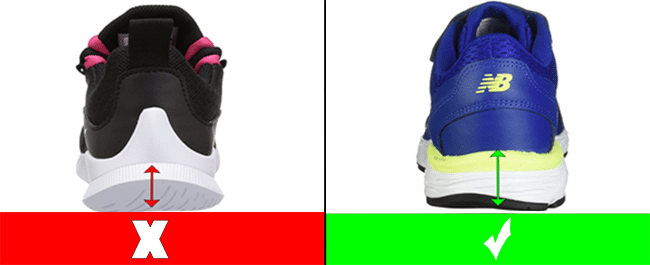
Is your child suffering from heel pain, and your pediatrician or physical therapist diagnosed them with plantar fasciitis? While this condition is often associated with adults, many parents are surprised to learn that it can affect children too. If you’ve been advised to get supportive footwear—like New Balance shoes—but weren’t given specific recommendations, I am here to help. With years of hands-on experience fitting children’s shoes, I’ll guide you through the best New Balance shoes for kids with plantar fasciitis and heel pain.
Can Shoes Help Relieve Pain From Plantar Fasciitis?
Sometimes, heel pain in children is simply caused by wearing shoes that lack proper support. The good news? The right pair of shoes can make a world of difference. Whether you’re talking to a pediatrician, physical therapist, or experienced shoe fitter, they’ll all agree: supportive footwear is essential for managing plantar fasciitis and other types of foot pain in kids. The right shoes help cushion each step, reduce stress on the plantar fascia, and give your child’s feet the support they need to heal and stay pain-free.
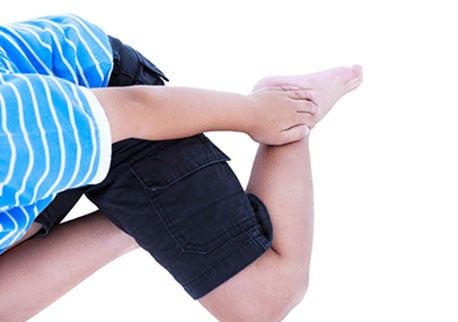
What Makes New Balance Shoes Effective for Plantar Fasciitis?
1. Firm Heel Counters: Firm heel counters are essential for maintaining proper alignment and reducing excessive pronation. This helps in minimizing stress on the plantar fascia and ensures that your child’s feet remain comfortable and supported throughout their activities. The construction of the heel counter in certain New Balance shoes is designed to hold the heel securely in place.
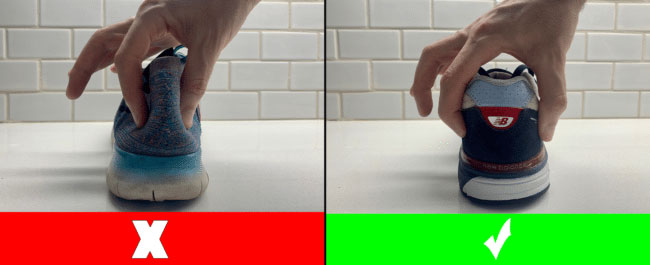
2. Targeted Heel Support: The heel is often the most affected area in plantar fasciitis. New Balance shoes incorporate targeted cushioning and support in the heel region, which plays a significant role in pain reduction.

3. Supportive Outsoles: A supportive outsole is crucial for distributing pressure evenly across the foot. This feature not only helps in managing plantar fasciitis but also supports overall foot health. The right outsole can prevent the foot from rolling inward or outward, a common issue that can exacerbate plantar fasciitis.
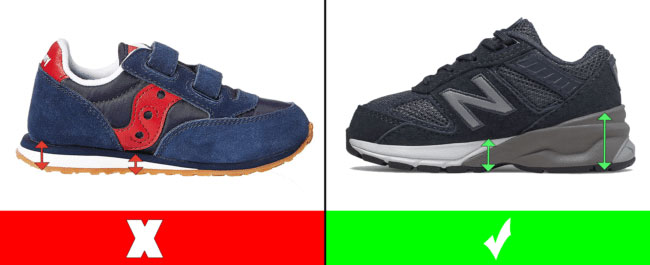
With numerous options available, selecting the right pair can be overwhelming. The right choice can make a significant difference in managing plantar fasciitis symptoms and enhancing your child’s overall comfort. Disclosure: This post contains affiliate links, meaning we may earn a small commission at no extra cost to you.
Best New Balance Shoes for Plantar Fasciitis
Here are my top recommendations for the best New Balance shoes for kids with plantar fasciitis in 2025. Each shoe offers excellent support and comes in medium (M), wide (W), and extra wide (XW) widths to ensure the perfect fit for your child’s feet.
1. Shoe Style 990v6 by New Balance
This is the absolute best shoe if your child has heel pain. The robust outsole helps distribute weight evenly across the foot and reduces strain on the muscles and joints. The downside that many parents complain about is the high price tag.
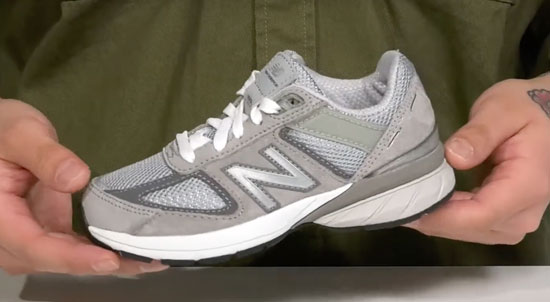
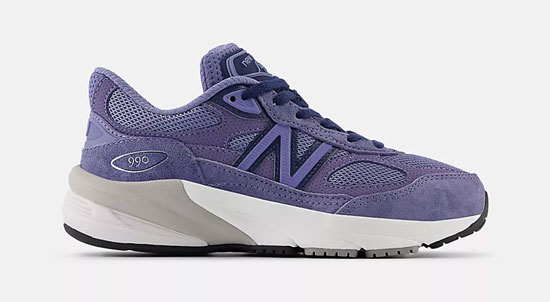
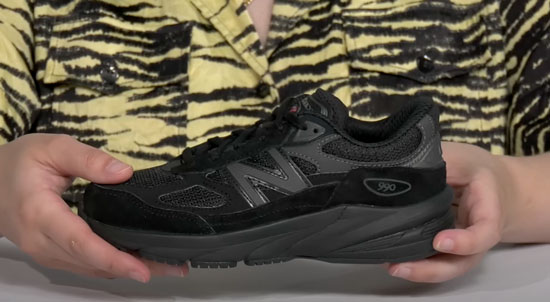
Key Features
- Order the shoe 990v6 with laces on the New Balance website, Amazon, or Zappos
- Available in medium, wide, and extra wide widths
- Also available in pink and navy blue
- I suggest that you get this shoe a half size larger than your child’s current foot size
2. Shoe Style Fresh Foam 625 by New Balance
These New Balance running shoes for kids with heel pain are perfect for kids who need a reliable all-around shoe, capable of supporting diverse sports engagements.
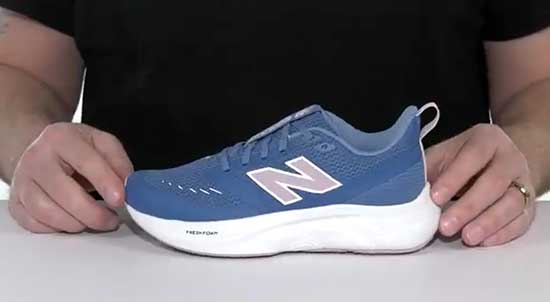
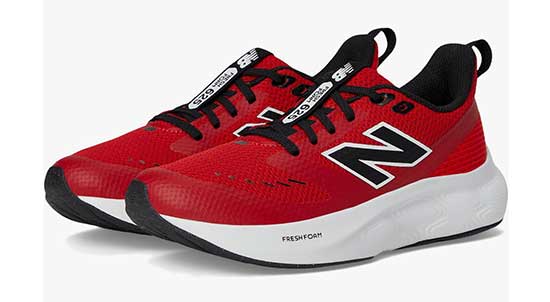
Key Features
- Order the shoe Fresh Foam 625 by New Balance on Amazon or the New Balance website
- Available in medium, wide, and extra wide widths
- Fresh foam midsole cushioning provides an ulta-cushioned, lightweight ride
- Padded collar and tongue
- I suggest that you get this shoe a half size larger than your child’s current foot size
3. Shoe Style 1906 by New Balance
These are some of the best New Balance shoes for heel pain and they offer a blend of style and functionality. The shoes are designed for both casual wear and athletic performance, making them versatile options for kids with heel pain.

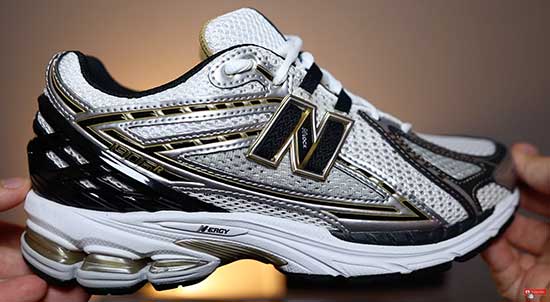
Key Features
- Order the shoe 1906 by New Balance on the New Balance website
- Available in medium and wide widths
- ABZORB midsole absorbs impact through a combination of cushioning and compression
- Padded collar and tongue
- I suggest that you get this shoe a half size larger than your child’s current foot size
4. Shoe Style 237 and 327 by New Balance
These New Balance shoes for heel pain are perfect for kids who want to make a fashion statement while enjoying the benefits of supportive footwear.
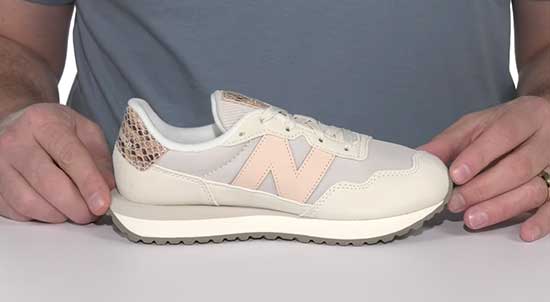
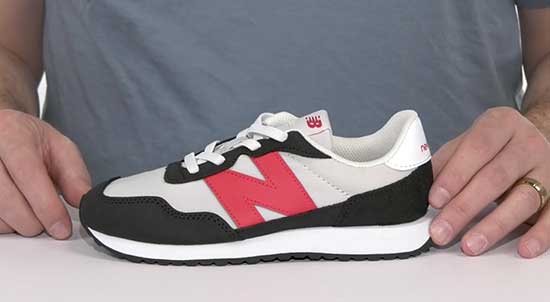
Key Features
- Order the shoe 237 and 327 by New Balance on Amazon or the New Balance website
- Fits medium or wide feet
- Breathable mesh upper
- Padded collar and tongue
- I suggest that you get this shoe a half size larger than your child’s current foot size
5. Shoe Style Fresh Foam 1440 v1 by New Balance
This supportive New Balance shoe offers plush cushioning and a stable heel design—perfect for kids dealing with heel pain or plantar fasciitis.
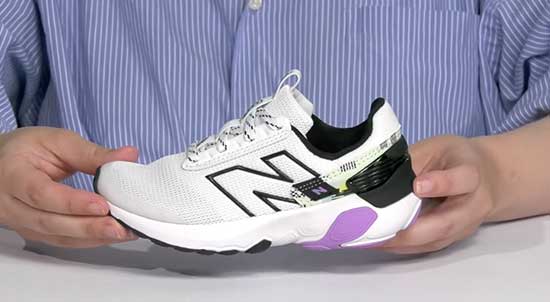

Key Features
- Order the shoe 1440 v1 by New Balance on Amazon or the New Balance website
- Fits medium or wide feet
- Breathable mesh upper
- Fresh Foam midsole foam cushioning
- I suggest that you get this shoe a half size larger than your child’s current foot size
6. Shoe style Fresh Foam X 1080v13 by New Balance
These New Balance shoes for heel pain offer plush cushioning, a supportive heel, and a smooth ride to keep growing feet comfortable and protected all day.
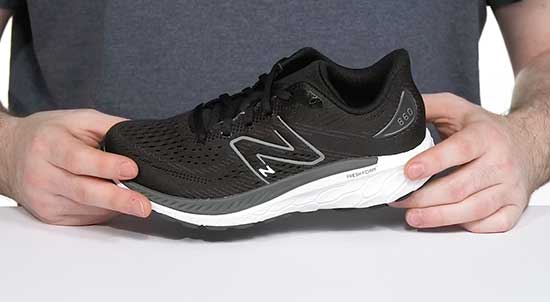
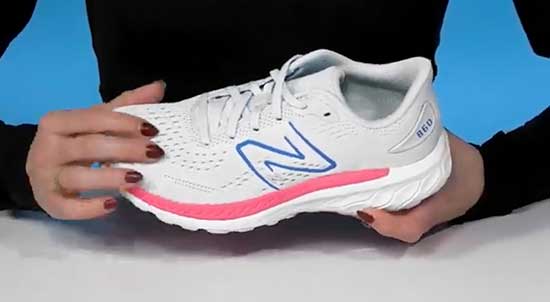
Key Features
- Order the shoe Fresh Foam X 1080v13 by New Balance on Amazon or the New Balance website
- Fits children with medium or wide feet
- Lace-up closure
- Suede and mesh upper
- I suggest that you get this shoe a half size larger than your child’s current foot size
Contact Me for Personalized Recommendations
Every child’s foot is unique, and what works for one may not work for another. Tailored advice can make a significant difference in addressing specific foot concerns effectively. For personalized shoe recommendations tailored to your child’s specific needs, feel free to contact me via email. I am here to assist you in finding the perfect pair that addresses your child’s foot shape and degree of pain.
While most of the shoes I recommend feature shoelaces rather than Velcro, there’s a good reason for it. Shoelaces offer better support and stability, making them ideal for kids with heel pain. In fact, I even suggest a special shoe lacing technique that can enhance comfort and reduce strain—perfect for helping your child feel better with every step.
The Importance of Ordering the Correct Shoe Size Online
Ordering the correct shoe size is vital for ensuring maximum comfort and effectiveness. Ill-fitting shoes can exacerbate plantar fasciitis symptoms and hinder proper foot development.
I’ve developed a convenient virtual shoe fitting service to help you easily determine your child’s shoe size from home. In this guide, I walk parents through the process of measuring their child’s feet and identifying whether they have narrow, medium, wide, or extra wide feet. Plus, I’ll help you figure out if your child has a high instep, ensuring you get the perfect fit every time.
If your child’s heel pain continues even after trying the supportive New Balance shoes I recommend, it might be time to consider adding heel cups or orthotics inside the shoes. But don’t worry—it all begins with finding the right supportive footwear. Heel cups are a highly effective, budget-friendly solution for relieving heel pain, and they can be just as impactful as orthotics in providing relief.
Best Heel Cups for Kids with Plantar Fasciitis
Based on my experience as a passionate shoe fitter helping kids with heel pain by fitting shoes and heel cups, here are the top heel cups I recommend. These products have been selected for their effectiveness in addressing the specific needs of children with plantar fasciitis.
Tuli’s Heel Cups
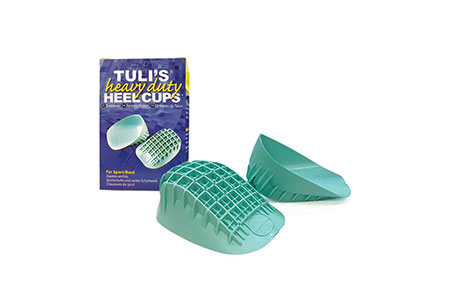
- Order Tuli’s Heel Cups on Amazon
- These heel cups for plantar fasciitis can fit in most shoes
- Small Size – Fits from a little kid shoe size 10.5 to a big kid shoe size 6. Best for children under 80 lbs.
- Regular Size – Fits big kid shoe size 6 and above. Weight up to 175 lbs.
KidSole Heel Cups
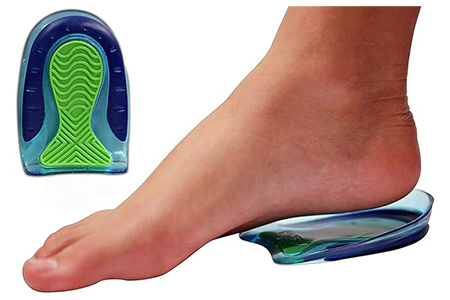
- Order KidSole heel cups on Amazon
- Available from a little kid shoe size 11 through big kid shoe size 7
- Sport grip design allows the heel pad to stay in place while kids run and play
- These gel heel cups for plantar fasciitis can fit in most enclosed shoes
- Fits from a little kid’s shoe size 10.5 to a big kid’s shoe size 6. Best for children under 80 lbs.
Bonus Resources: Sandals and Soccer Cleats for Heel Pain
While sneakers are often the go-to choice for everyday wear, there are situations where sandals or soccer cleats might be needed. In such cases, it’s important to choose options that offer similar support and cushioning to prevent heel pain. Selecting the right footwear for different activities ensures consistent support, reducing the risk of exacerbating plantar fasciitis symptoms.
- Soccer Cleats: Choose cleats with a firm heel counter and ample padding. Soccer cleats designed with reinforced heels and shock-absorbing insoles can help protect against heel pain during intense physical activities.
- Sandals: Look for supportive sandals with arch support and a cushioned footbed. Brands that offer orthotic-friendly sandals are ideal as they provide the necessary support without compromising on style and breathability.
Wearing non-supportive footwear or going barefoot is not advisable for kids who suffer from Plantar Fasciitis as it will cause them to put more strain and cause more inflammation of the plantar fascia.


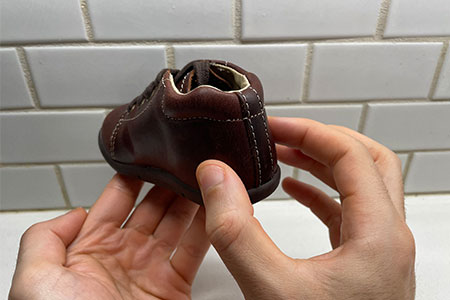
I have a question. My son was fitted for shoes and insoles. His left foot is a whole size bigger. He is a 4.5 on the left foot and 3.5 on the right. What shoe size do I buy? The assistant said go up to a 5. But now its a size and a half larger for the right foot
Hi Nicole,
I hope you and your son are well. I recommend that you provide your son with a shoe size 4.5. You are going to have to compromise on the amount of growing room, because if you go a whole size and a half longer you will end up compromising your son’s stability.
The key is to find a shoe with extra depth. What shoe style is your son wearing?